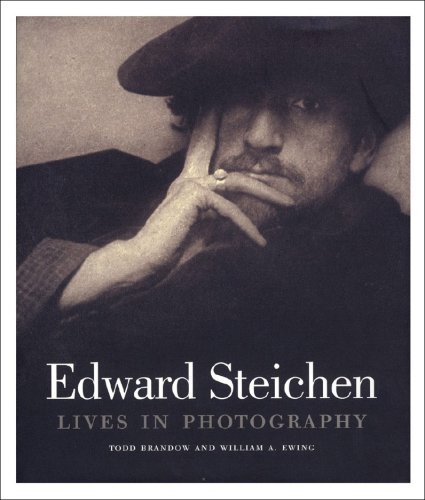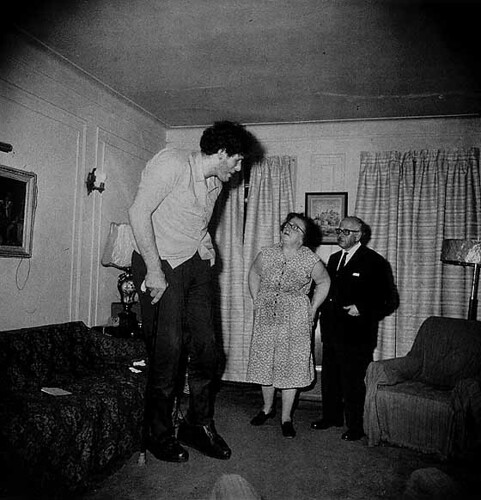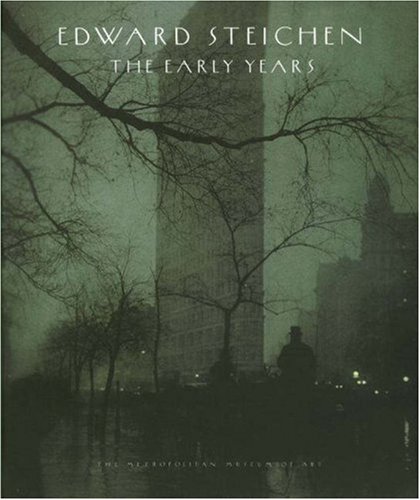EDWARD STEICHEN IN HIGH FASHION - IN HIGH FASHION
Edward Steichen In High Fashion - High Fashion Industry
Edward Steichen In High Fashion
- Edward J. Steichen (March 27, 1879 – March 25, 1973) was an American photographer, painter, and art gallery and museum curator. He was the most frequently featured photographer in Alfred Stieglitz' groundbreaking magazine Camera Work during its run from 1903 to 1917.
- Fashion design is the art of the application of design and [[aesthetics]or natural beauty] to clothing and accessories. Fashion design is influenced by cultural and social attitudes, and has varied over time and place.
- This is a term (and category) used regarding the best of the current fashion trends.
- haute couture: trend-setting fashions
Edward Steichen: Lives in Photography

By far the most lavish, thoughtfully selected, and beautifully produced book of Steichen’s work.
Edward Steichen (1879-1973) is unquestionably one of the most prolific, influential, and indeed controversial names in the history of photography. He was admired by many for his achievements as a fine-art photographer, while impressing countless others with the force of his commercial accomplishments. The influence of his legendary exhibition, The Family of Man, is still felt. This volume traces Steichen’s career trajectory from his Pictoralist beginnings to his time with Conde Nast through his directorship of photography at the Museum of Modern Art. Hundreds of his photographs are reproduced in stunning four-color to reveal the complexities and nuances of these black-and-white images. Essays from a range of scholars explore his most important subjects and weigh his legacy. Contributors include A. D. Coleman, Joanna T. Steichen, and Ronald Gedrim. With a full bibliography and chronology, this is the most complete and wide-ranging volume on Steichen ever published. 250 tinted and four-color photographs

83% (6)
tribute to diane arbus

Diane Arbus
Diane Arbus
Born March 14, 1923(1923-03-14)
Died July 26, 1971 (aged 48)
Nationality American
Field Photography
Famous works
Identical Twins, Roselle, New Jersey, 1967, on the cover of Diane Arbus: An Aperture Monograph.
Identical Twins, Roselle, New Jersey, 1967, on the cover of Diane Arbus: An Aperture Monograph.
Diane Arbus (March 14, 1923 – July 26, 1971) was an American photographer, noted for her portraits of people on the fringes of society.
* 1 Early life
* 2 Later life and photography career
* 3 Legacy
* 4 Famous photographs
* 5 Arbus quotes
* 6 In popular culture
* 7 Footnotes
* 8 References
* 9 External link
Early life
Diane Nemerov was born in New York City into a wealthy Jewish family, in which she was overshadowed by her older brother, Howard Nemerov, who served as United States Poet Laureate on two separate occasions. She attended The Fieldston School. She fell in love with future actor Allan Arbus at age 14, and married him soon after turning 18, despite her parents' objections. When Allan started training as a photographer for the US Army, he shared his lessons with Diane. As a husband-wife team, the Arbuses became successful in the fashion world: Allan was the photographer, Diane was the stylist. As Diane began to take her own photographs, she took formal lessons with Lisette Model at The New School in New York. Edward Steichen's noted photo exhibit, The Family of Man included a photograph credited to the couple.[1] Together the Arbuses had two daughters, photographer Amy Arbus and writer and art director Doon Arbus, but, by 1959, they had separated.
Later life and photography career
After separating from her husband, Arbus studied with Alexey Brodovitch and Richard Avedon. Beginning in 1960, Arbus worked extensively as a photojournalist, her photos appearing in Esquire, The New York Times Magazine, Harper's Bazaar and Sunday Times magazines, among others. Her first public work was an assignment by Esquire editor and art director Robert Benton. Published under the title, "The Vertical Journey: Six Movements of a Moment Within the Heart of the City", it consisted of six portraits of an assortment of New Yorkers. Arbus would go on to collaborate with Hayes and Benton (and Benton's successors) for 31 photographs in 18 articles.[citations needed]
Arbus' Child with Toy Hand Grenade in Central Park, New York City (1962)
Arbus' Child with Toy Hand Grenade in Central Park, New York City (1962)
Arbus' early work was created using 35mm cameras, but by the 1960s Arbus adopted the Rolleiflex medium format twin-lens reflex. This format provided a square aspect ratio, higher image resolution, and a waist-level viewfinder that allowed Arbus to connect with her subjects in ways that a standard eye-level viewfinder did not. Arbus also experimented with the use of flashes in daylight, allowing her to highlight and separate her subjects from the background.
In 1963, Arbus received a Guggenheim Fellowship grant, allowing her to focus on her art. Arbus received a second Guggenheim grant in 1966. The Museum of Modern Art, in 1967, staged Arbus' first museum show as the New Documents show which included the work of Garry Winogrand and Lee Friedlander. Arbus also taught photography at Parsons The New School for Design in New York and Hampshire College in Amherst, Massachusetts.
In July 1971, Arbus committed suicide in Greenwich Village at the age of 48 by ingesting a large quantity of barbiturates and then slashing her wrists. Rumors held that she photographed her suicide, but no photos were discovered by the police.
Legacy
Aperture magazine was crucial in reviving Arbus' artistic reputation. MoMA curator John Szarkowski prepared to stage a retrospective in 1972, but the accompanying Diane Arbus catalogue proposal was turned down by all major publishing houses. Aperture's Michael E. Hoffman accepted the challenge, producing one of the most influential photography books. The Aperture monograph has since been reprinted 12 times, selling more than 100,000 copies. The MoMA retrospective traveled throughout North America attracting more than 7 million viewers. Also in 1972, Arbus became the first American photographer to be represented at the Venice Biennale. Arbus' photograph Identical Twins is tenth on the list of most expensive photographs having sold in 2004 for $478,400.
Arbus is noted by critics and art historians for her photographs depicting outsiders, such as tranvestites, dwarves, giants, prostitutes, and ordinary citizens in poses and settings conveying a disturbing uncanniness.
Some critics claim that Arbus' voyeuristic approach demeaned her subjects, [2] based around a major London retrospective of Arbus's works. Admirers of Arbus's work, such as filmmaker Todd Solondz were also interviewed by the BBC and passionately defended her work. In an effort to dispel this image of only photographing freaks, Arbus undertook a study of conve
Robert Frank, "US 285", NM, 1956, Gelatin Silver Print, 13 1/2 x 9 3/4 in

Robert Frank was born in Zurich, Switzerland in 1924. Though he and his family were protected in Switzerland during WWII, the war left an artistic impression on Frank. He studied photography in Switzerland and compiled a book of his first photos. He emigrated to the United States and took a job as a fashion photographer at New York's Harpers Bazaar. By 1950, Frank had traveled to South America and compiled more works of his photos. This year was very progressive for his career; he met Edward Steichen, and he showed his work at the Museum of Modern Art NYC. He married Mary Lockspeiser and would have two children during his marriage to her. As he built his career in as a freelance photojournalist, he began to criticize the cultural significance of money in America, as well as the pretentiousness and despair of its lonely populous. Frank set out in 1955 on a two year set of road trips funded by a Guggenheim Grant that he won with the help of the photographer Walker Evans. Eighty-three of these photographs were compiled into a book called The Americans and depicted American culture through individuals of all walks of life. Jack Kerouac collaborated with Frank on his book by writing an introduction. After this, Frank became friends with Allen Ginsberg and integrated himself into the Beat era. Although the photographs were imbued with irony and grit and not well received by popular culture, the Beat generation and followers received the book positively and spread its popularity. The book became widely received and contrasted the popular photography of the time. In 1961-62 Frank held individual gallery shows at the Art Institute of Chicago and the MoMA in New York. In the late 60s, Frank made a variety of films featuring various members of the Beat group, and also filmed a documentary about the Rolling Stone's 1972 rock tour. In the 1970s he returned to still film and began to publish multimedia imagery combining photography with collage. The tragic death of his daughter and the subsequent schizophrenia diagnosis of his son led him to the subject matter of his contemporary art. He is still alive and lives in Nova Scotia, Canada.
Context: US 285 is from the collection of photographs published in The Americans. It is typical of Frank's style during the time and incorporates irony, cynicism, and loneliness as facets of the American culture and conveyed through landscape imagery.
Composition: The simple setting of the photograph sets up a classic image of the road stretching on into the horizon. The photograph uses interesting lines of perspective-- the horizon line is pushed far up toward the top of the image, and although the lines of the image extend out into the vanishing point, they are broken by a grade change in the road. The asphalt road shows the sign that rain had fallen here recently, and is echoed in the dark sky on the horizon. The photograph is gritty and high-contrast, with very light lights and dark darks. In the image, bright light is only present on the road or in the markings of the road. The lines dividing the lanes divide the image in half while offsetting it with their inherent patterns. There is a car in the left hand lane in the distance that is making its way toward the viewer, so as the viewer's eye is drawn out into the distance, there is evidence of movement in the opposite direction.
Concept: As the eye is drawn in both directions, the idea of the road as a long path toward the west is muddled by the car moving toward the viewer. This ironic message represents a confusion with the American West and the American dream. The wet road and high contrast features of the photo imbue it with a deep sense of hopelessness and meaninglessness. The dominance of the road in the image conveys its importance in the then-contemporary American landscape.

edward steichen in high fashion

One of the most influential figures in the history of photography, Edward Steichen (1879-1973) was also one of the most precocious. Born in Luxembourg, raised in Wisconsin, and trained as a lithographer's apprentice, Steichen took up photography in his teens and by age twenty-three had created brooding tonalist landscapes and brilliant psychological studies that won the praise of Alfred Stieglitz in New York and Auguste Rodin in Paris, among others. Over the next decade, this young man--the preferred portraitist of the elite of two continents--was repeatedly acclaimed as the peerless master of the painterly photograph. This volume, covering the period from the late 1890s to World War I, highlights masterpieces from The Metropolitan Museum of Art, which houses the finest collection of Steichen's early work in the world, and reproduces them in near-facsimile through four-color digital offset lithography.
Steichen worked with a designer's inventive eye, a Symbolist's poetic sensibility, an entrepreneur's charisma, and--above all--the originality and finesse of a creative and painstaking printer to establish ambitious new standards in artistic photography. Overlaying the subtle tone-poetry of his platinum prints with repeated washes of harmonious color, he created unforgettable images. In his three famous twilight views of New York's Flatiron Building, one of the landmarks of turn-of-the-century architecture, Steichen crafted a powerful symbol of a new age. His stunning sequence of Rodin's Balzac figure in the moonlight is presented here as are his nudes, with their frankly erotic sense of flesh and weight. And the intense energy of a decade comes to life in his portraits of a diverse cast ranging from Richard Strauss to J. P. Morgan, Maurice Maeterlinck to George Bernard Shaw--and Steichen himself, the founding auteur of a century of celebrity. In the accompanying text, Joel Smith explores Steichen's maturing artistry in the light of contemporary developments in photography, graphic design, and the decorative arts.
This is a stunning visual record of the emergence of Steichen as a great artist and is one of the most important books to be published on his life and work in recent years.
See also:
play fashion games for girls
street fashion tokyo
life and fashion magazine
celebrity fashion cheap
selena gomez new fashion line
fashion schools in dubai
mens fashion cheap
1970 mens fashion
korean fashion hats
top fashion brand
|